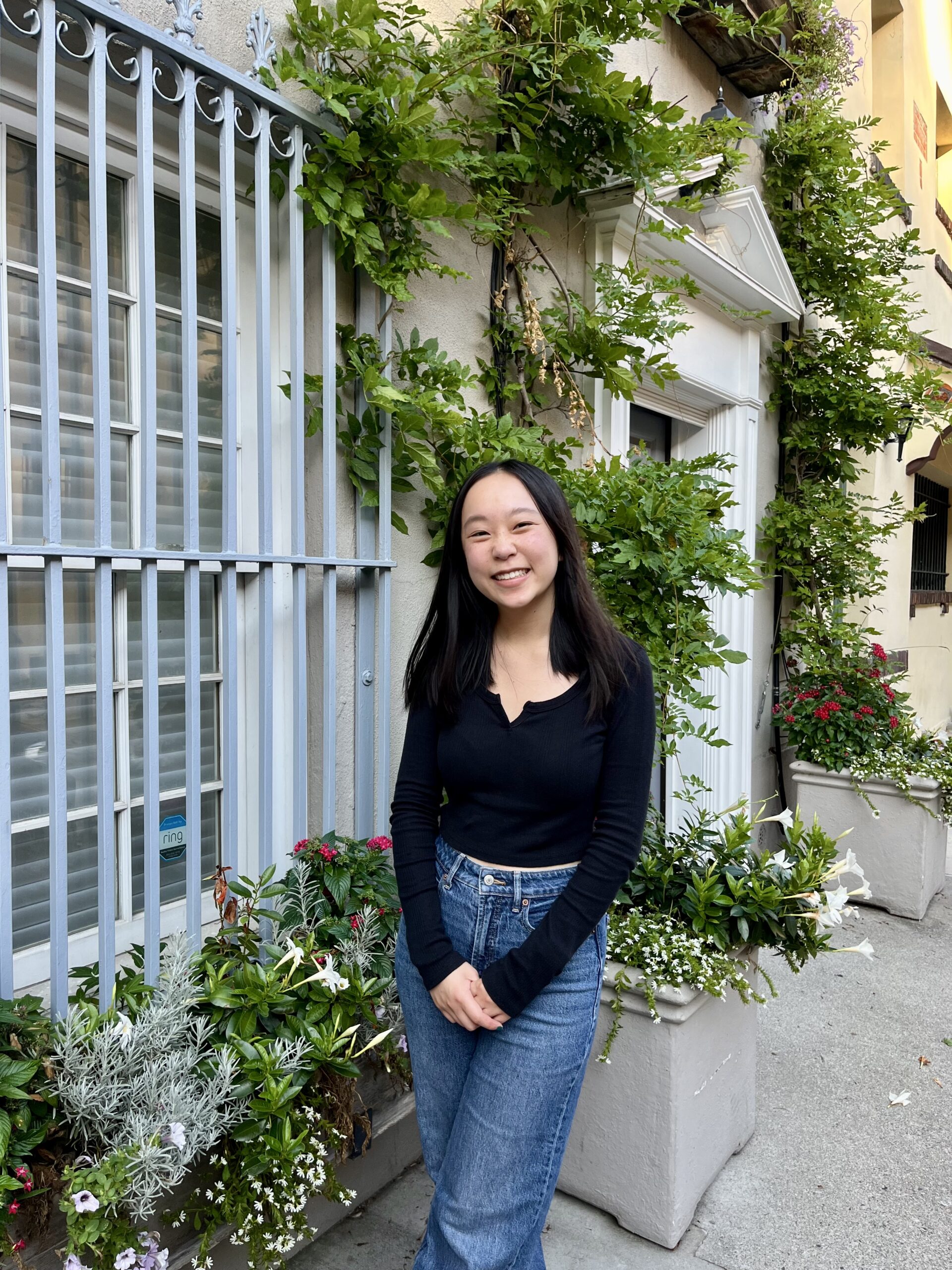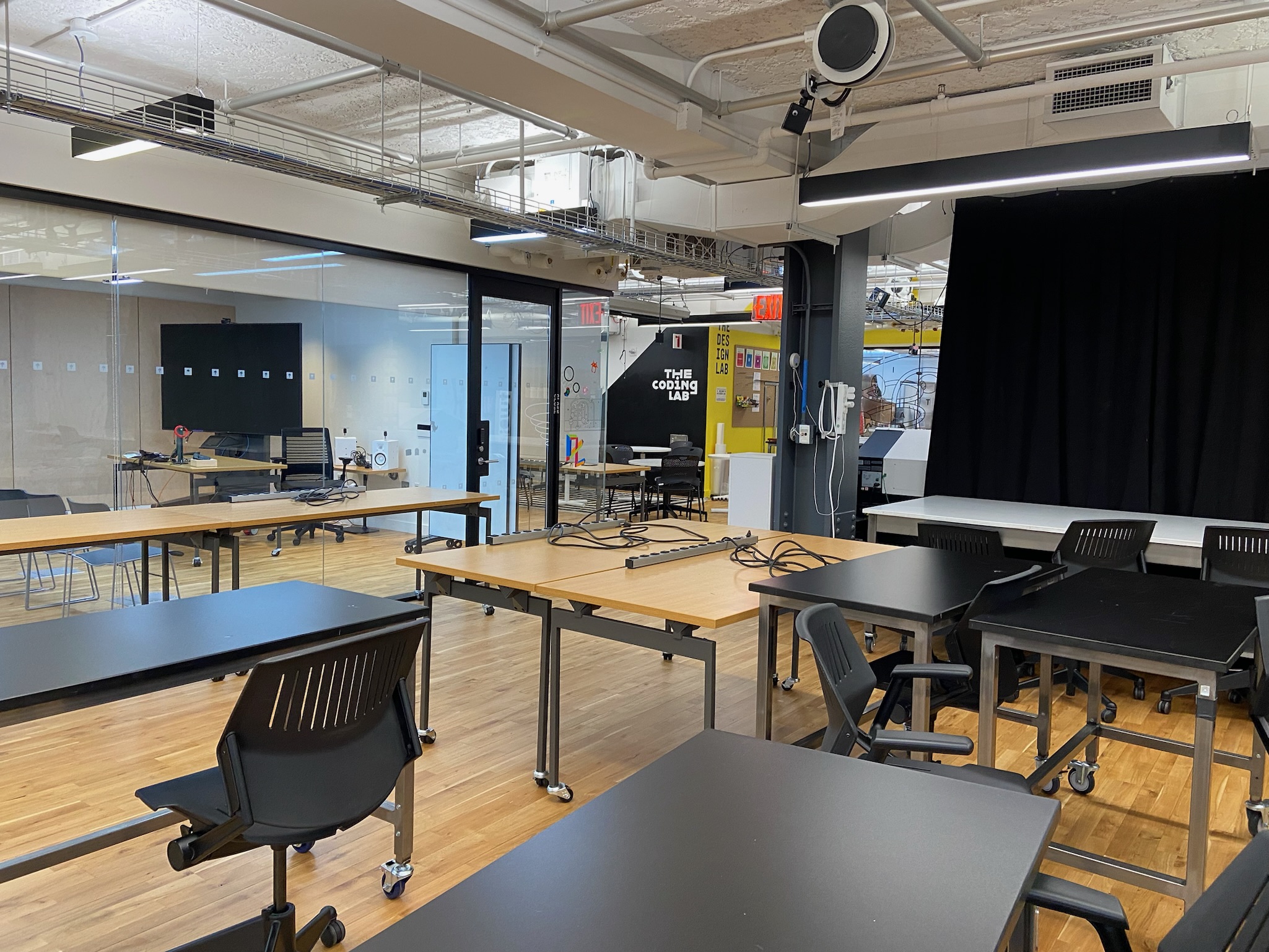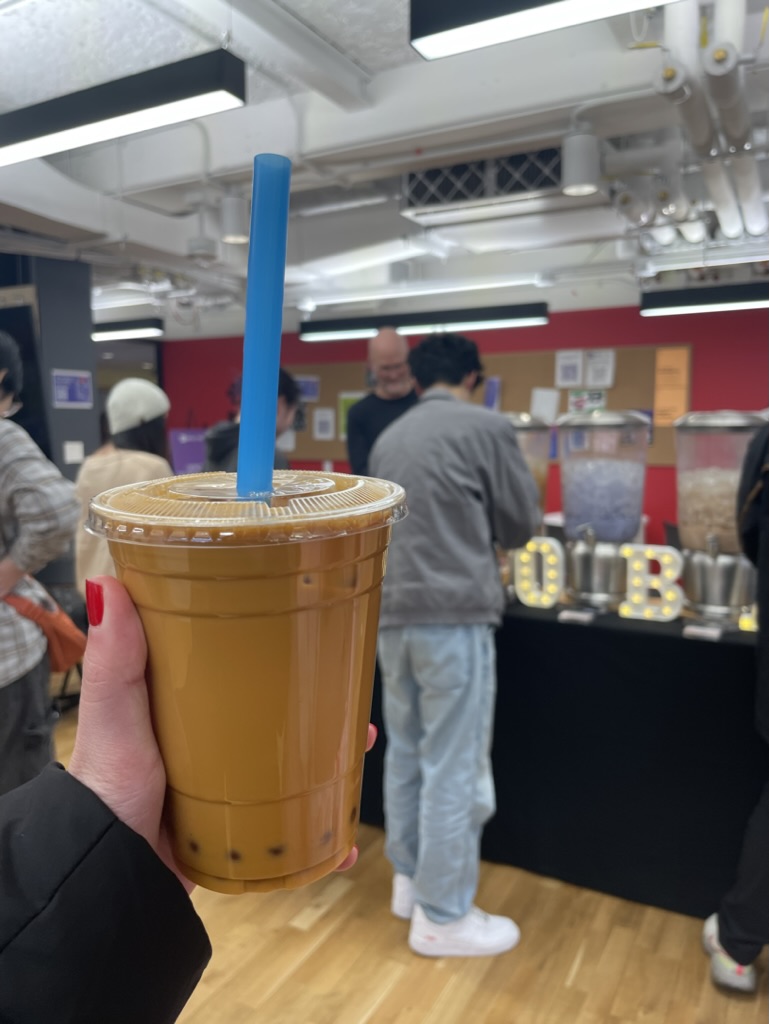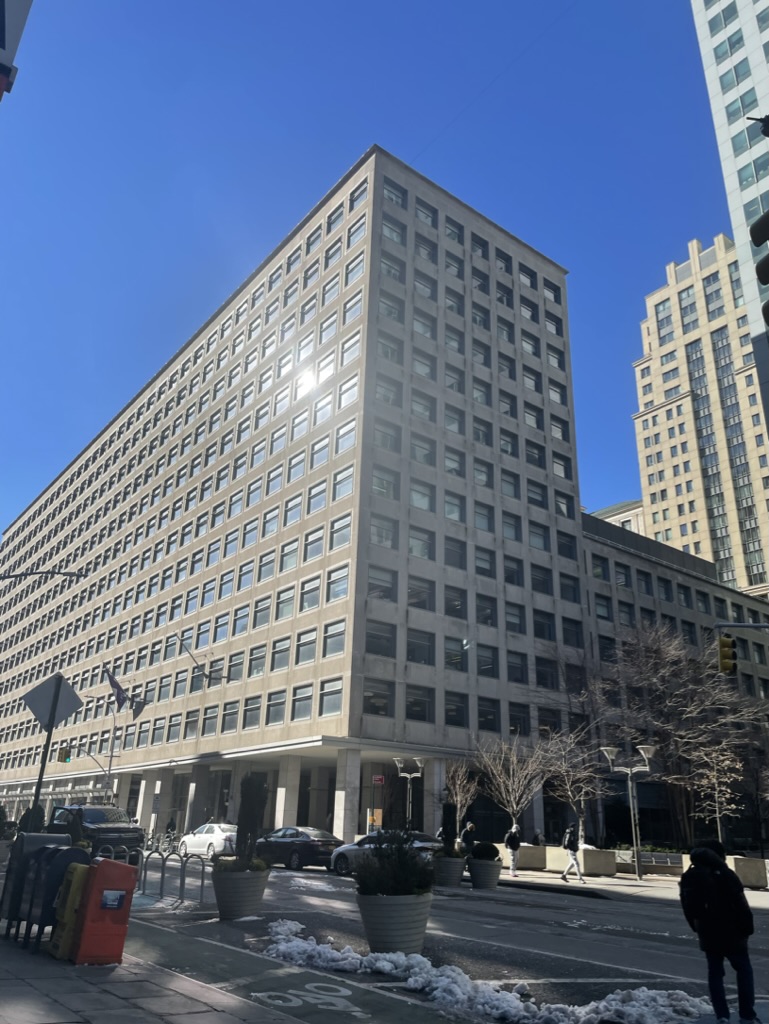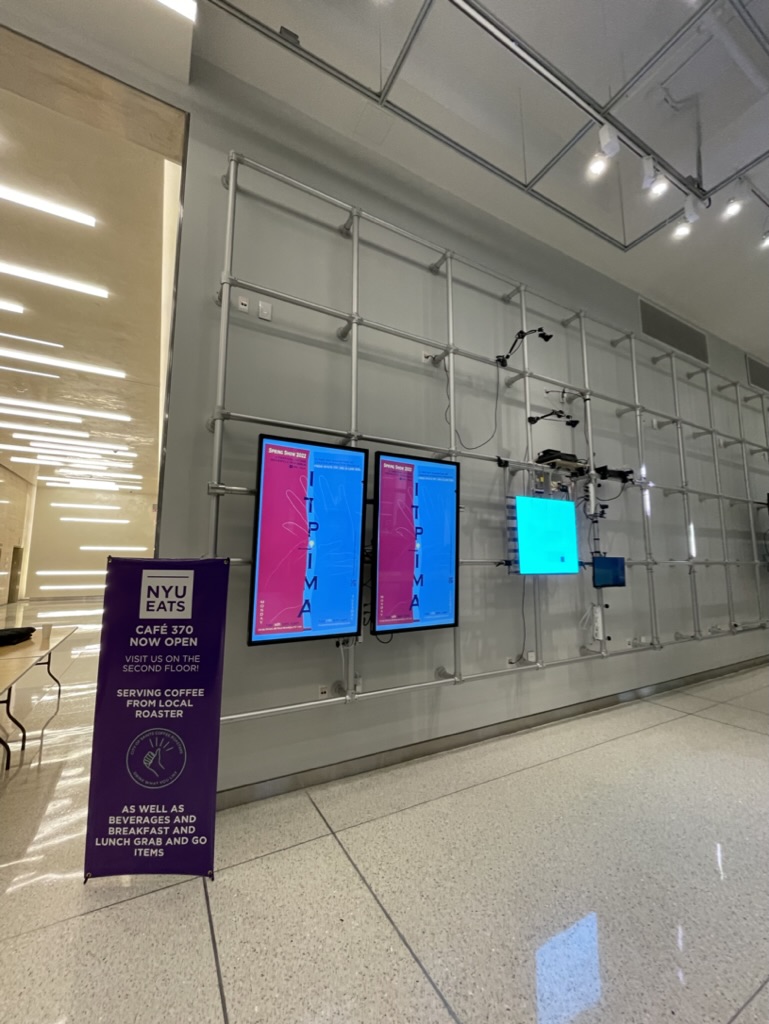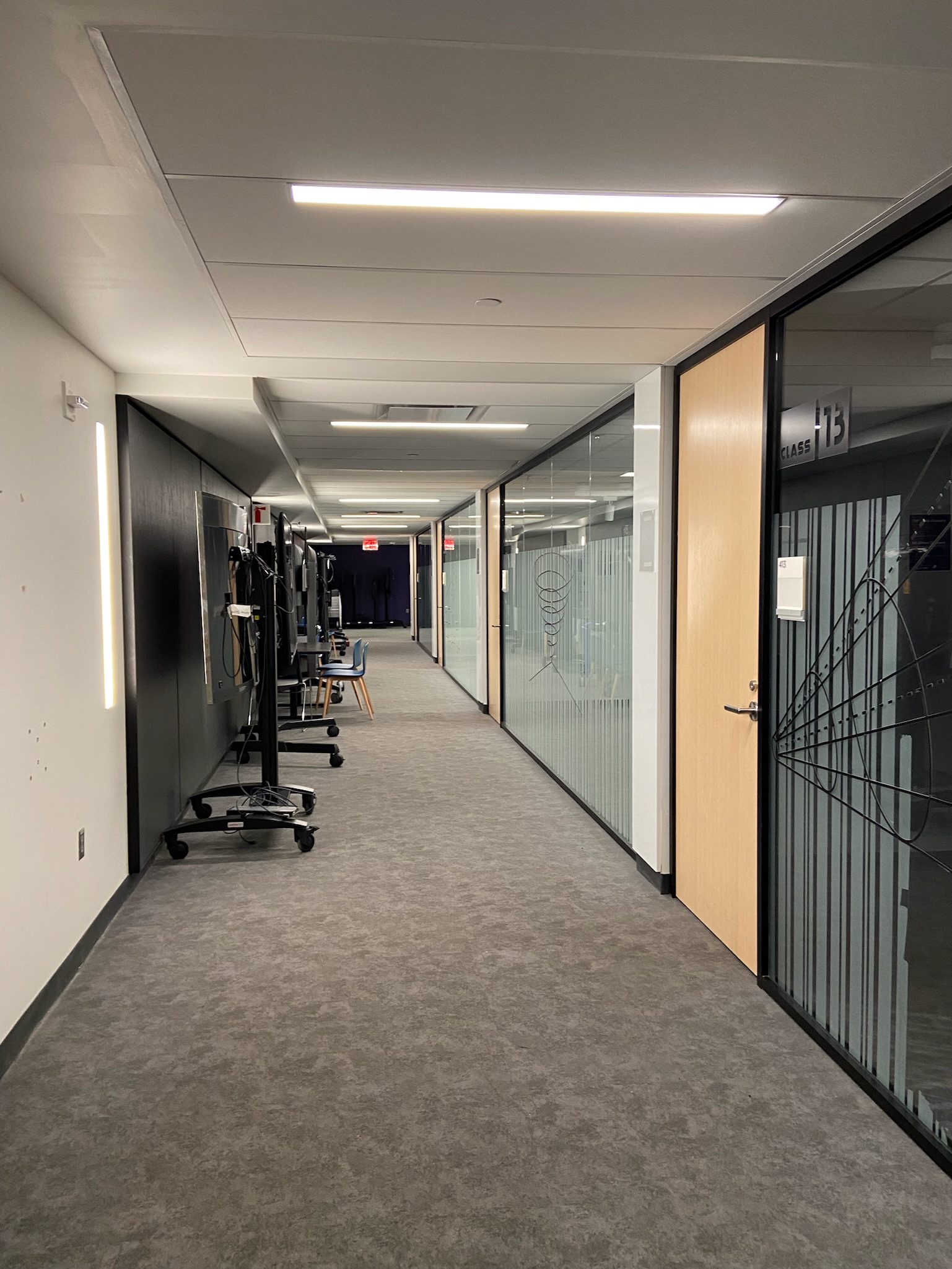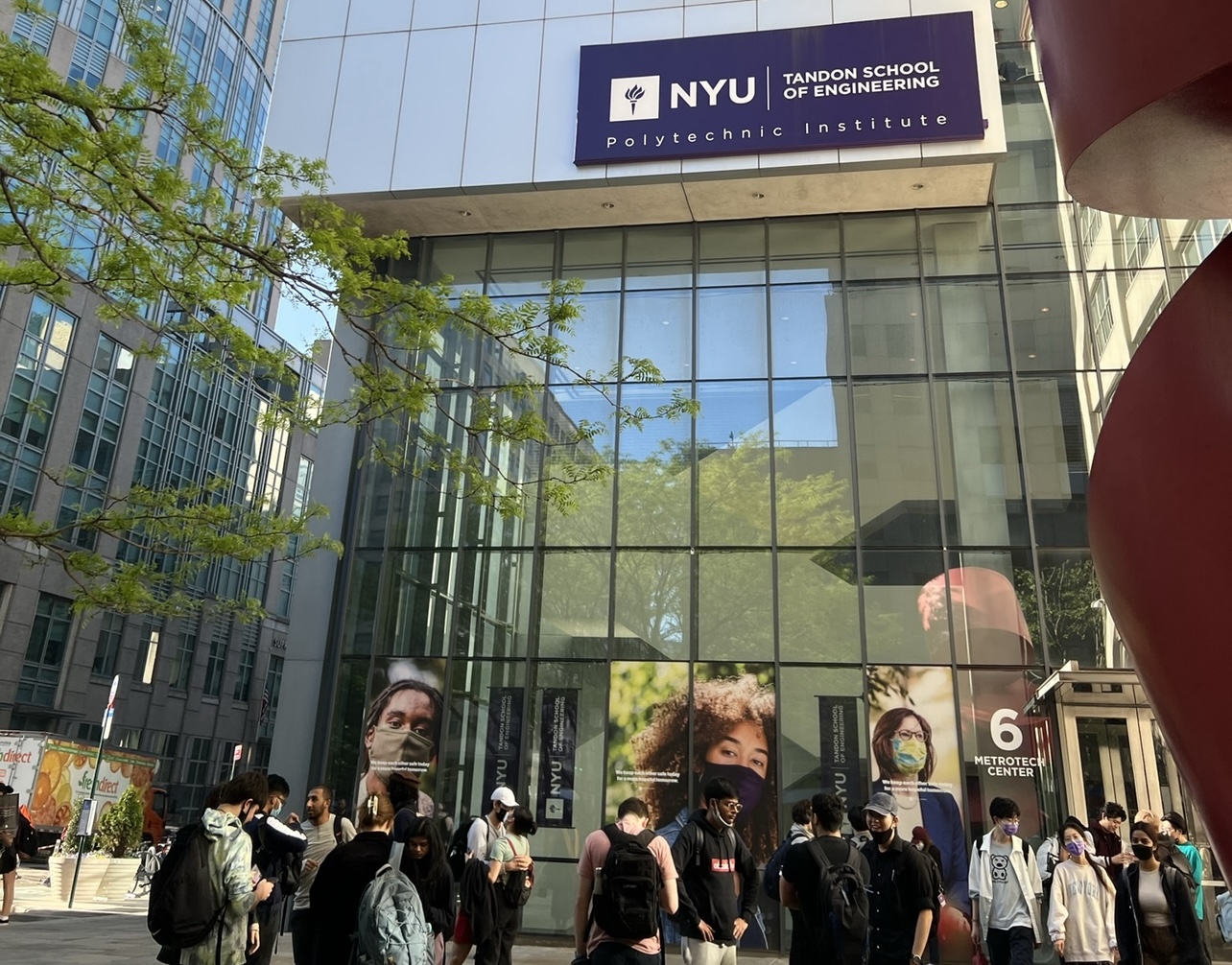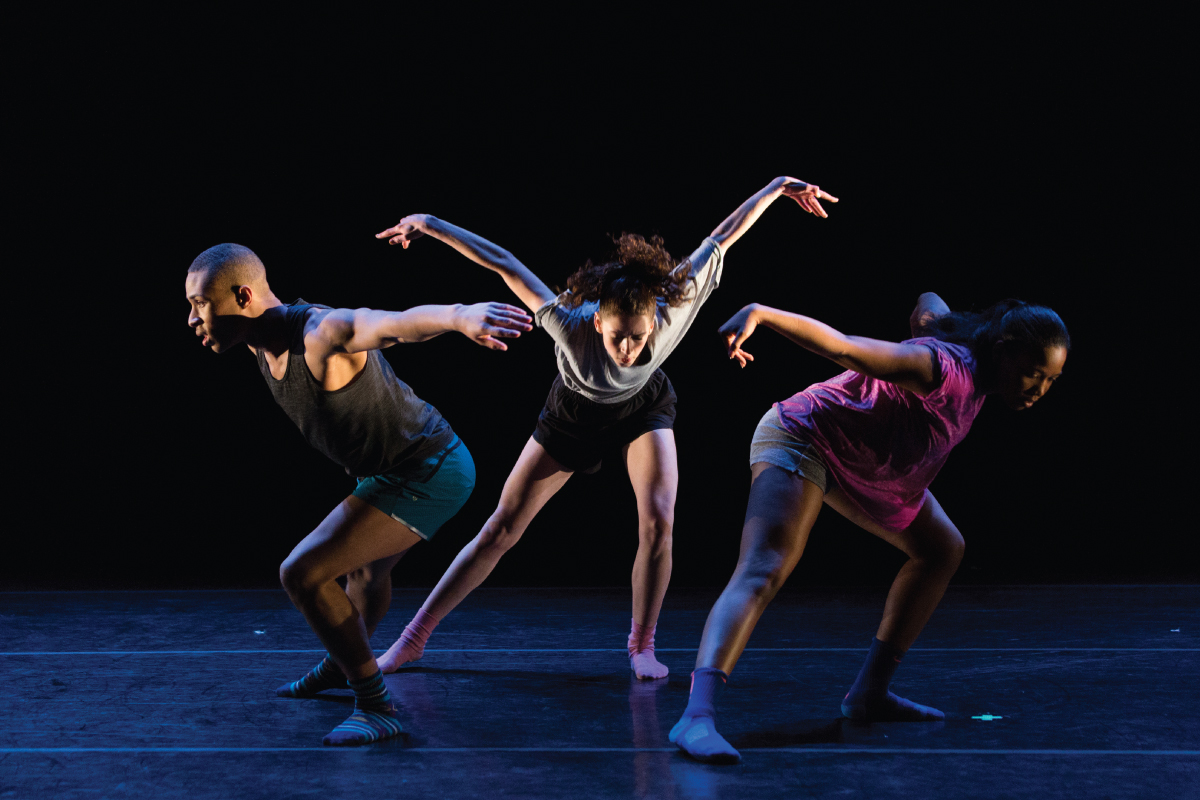Published April 17, 2024
Tisch Interactive Media Arts: Everything You Need to Know
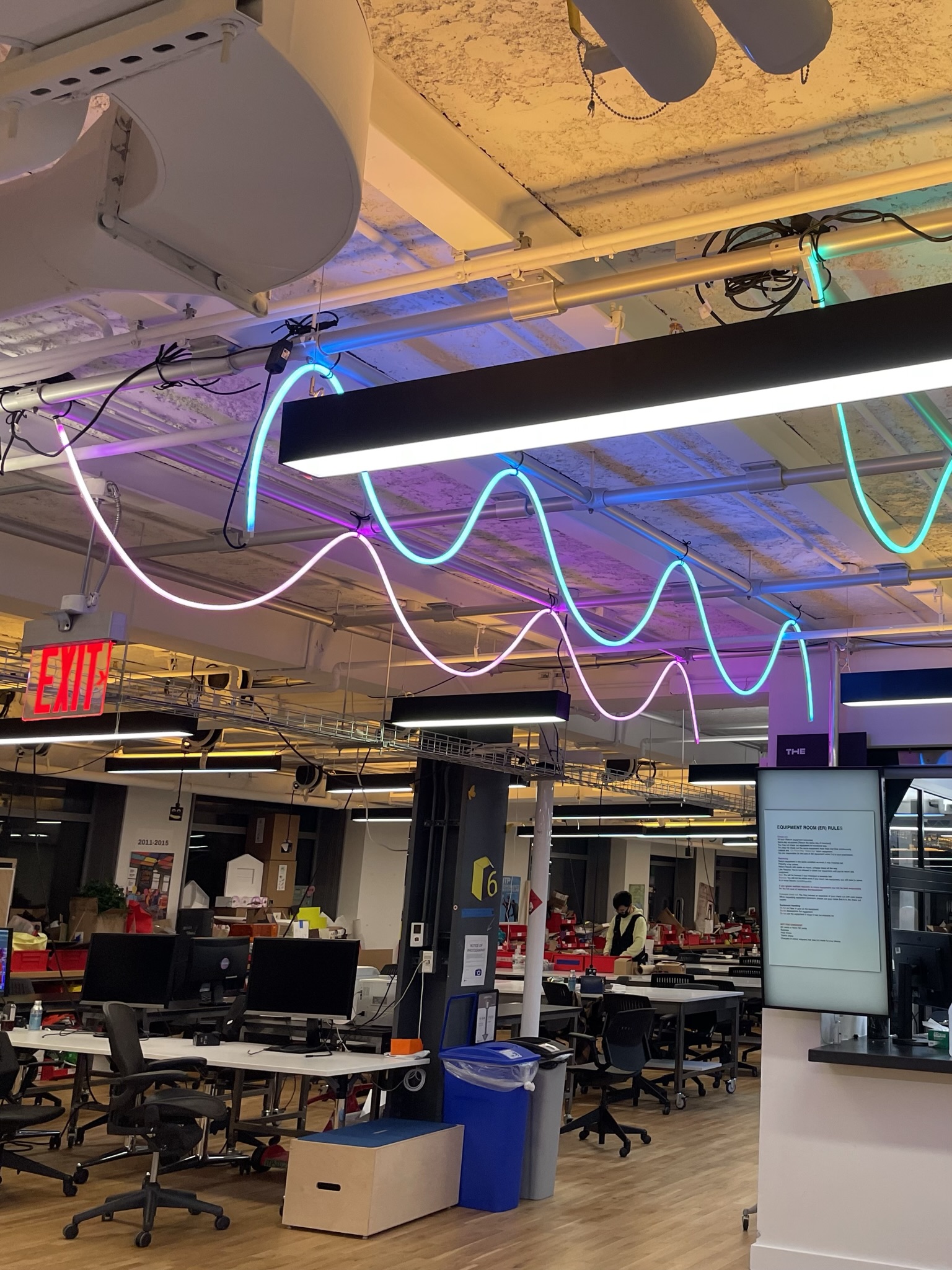
The TL;DR
- The Interactive Media Arts (IMA) major is an interdisciplinary undergraduate program within NYU’s Tisch School of the Arts.
- The major blends technology and creativity, with a lot of fun and unexpected opportunities in and out of the classroom.
- As an IMA major, you have a range of exciting career options.
Choosing a major is a big decision, so it is important to know all your options. At NYU’s Tisch School of the Arts, the Interactive Media Arts (IMA) program, which explores digital interactivity, is quickly growing in popularity.
When I was in high school applying to colleges, I had a hard time choosing my potential major. Nothing felt like the right program for me, whether I was considering Computer Science, Mechanical Engineering, or another similar major. However, NYU’s IMA program got me excited about the possibility of pursuing a major that aligns with my interests.
Let’s break down everything about the IMA major to learn if the program could be the right fit for you too!
Interactive Media Arts 101
Wait, I’m Still Not Sure What This Program Is!
Interactive Media Arts highlights computation as a key skill to creativity in our digital world. The IMA program combines NYU’s liberal arts core with the ability to code, create physical and digital interactions, and explore new media.
The IMA curriculum emphasizes proficiency across many different areas of technology and creativity. This exploration starts in your first semester at NYU with two core classes that all IMA students take. First, Creative Computing taught me about the basics of technology and programming. Second, Communications Lab helped me improve my artistic abilities by teaching me to create different forms of media, such as short films and animations.

IMA classes fall into six categories to broaden students’ skill sets:
- Programming and data
- Physical computing
- Media arts
- Design and fabrication
- Tech and society
- Project development and research
The major offers a high degree of flexibility, allowing me to choose courses that interest me. Liberal arts and sciences courses and general electives complete the rest of the Bachelor of Fine Arts degree. Additionally, there is enough space to double-major or minor in other disciplines. To learn more about the IMA program structure and view an example of a four-year plan, check out the IMA undergraduate curriculum.
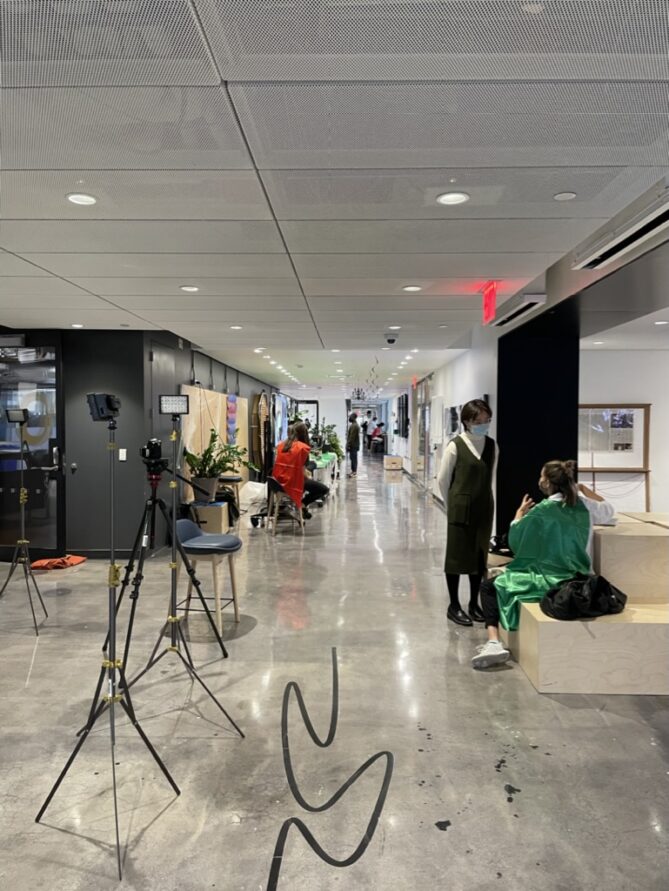
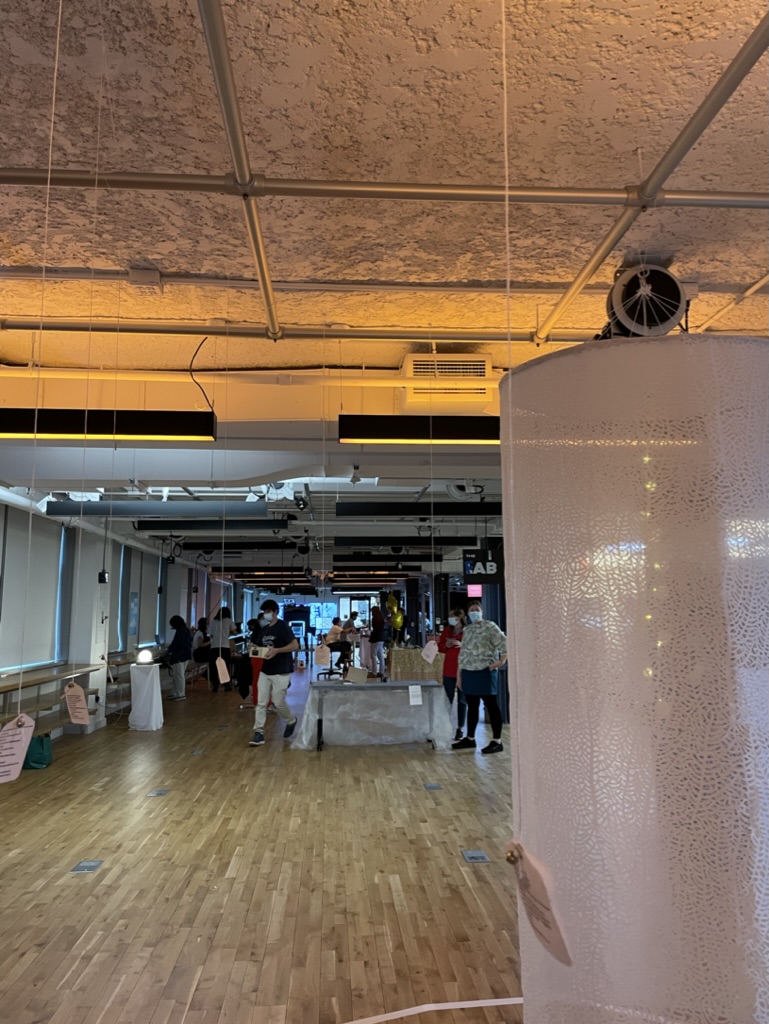
That’s Really a College Class?
Yes, It Is! IMA Has Some of the Coolest Classes You Can Find at NYU.
All my favorite NYU classes are from the Interactive Media Arts program! Since most IMA classes are project-based, I get to create projects instead of taking tests (which I prefer).
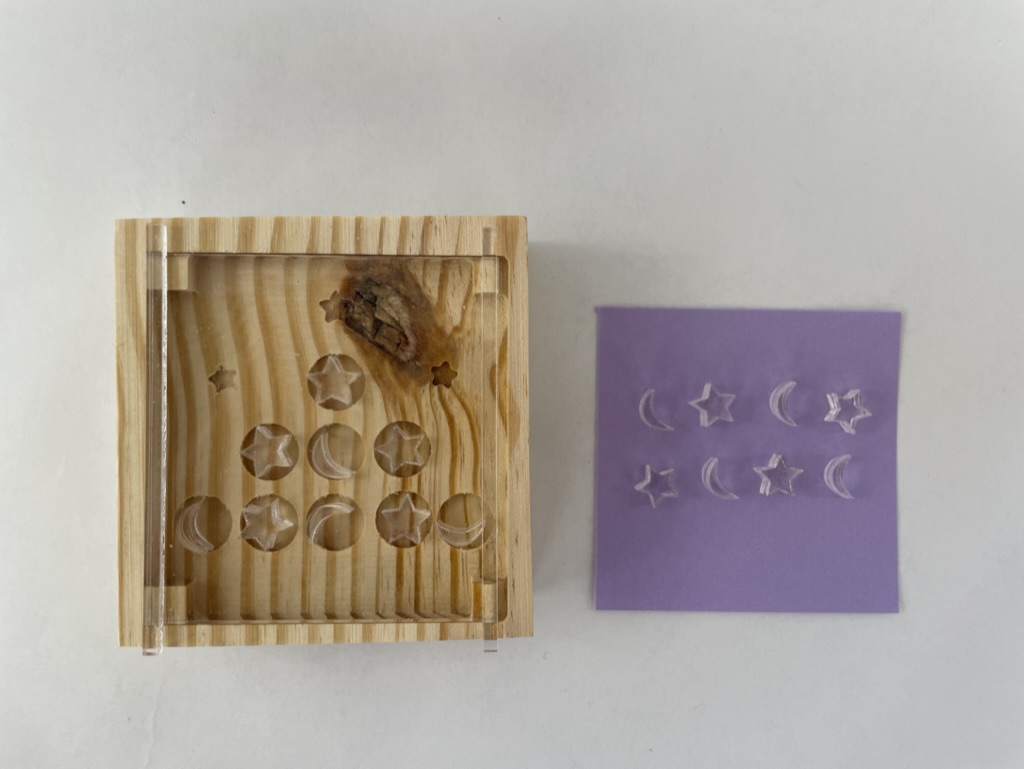
For example, I took an IMA course called Introduction to Digital Fabrication, which is one of the most popular courses offered. There, I learned various fabrication techniques and how to operate 3D printers, laser cutters, and computer numerical control machines. Our building in Downtown Brooklyn has a fabrication shop with high-end machines. In addition, we have access to the NYU Tandon School of Engineering MakerSpace across the street. Both places have all the resources you need to bring your ideas to life.
Last semester I took a course called Topics in Media Art: Typography and Technology. We learned about the history of type and had the opportunity to design our own fonts. For a field trip, we visited a printshop in Williamsburg and printed our work on a Risograph. These special printers mix screen printing and photocopying for posters, zines, graphic novels, and more.
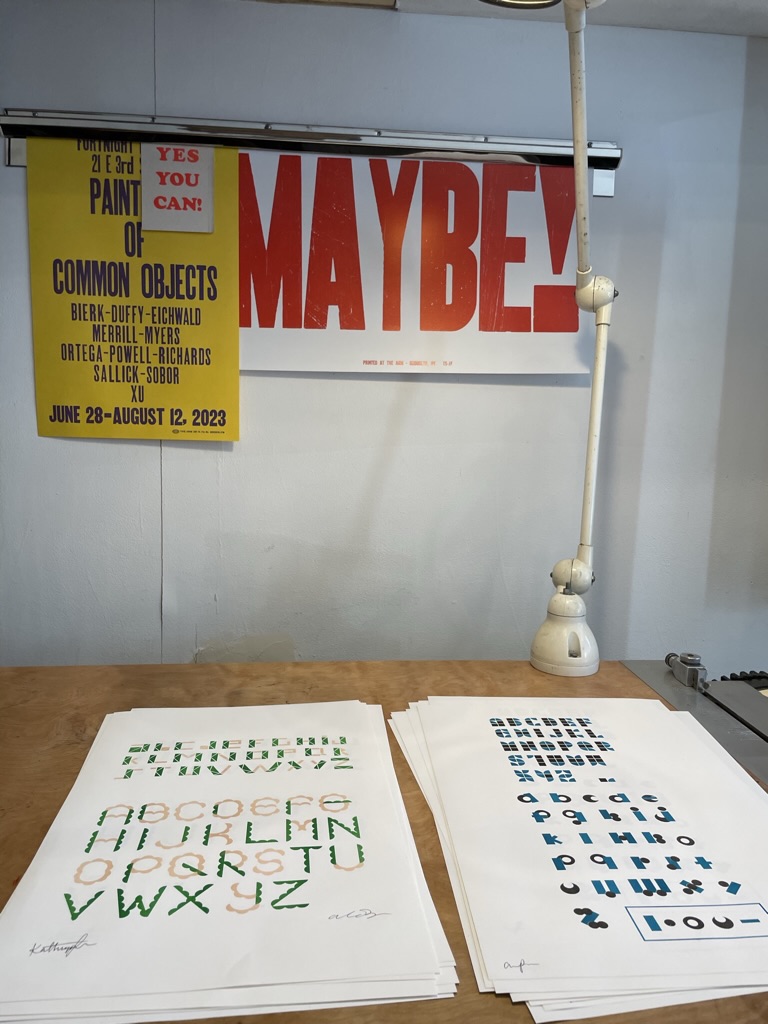
One of my favorite classes was Useless Machines, where we explored the concept of “uselessness” and its application in the machines we come across every day. At the end of the semester, my class had the opportunity to showcase our work at a local gallery show!
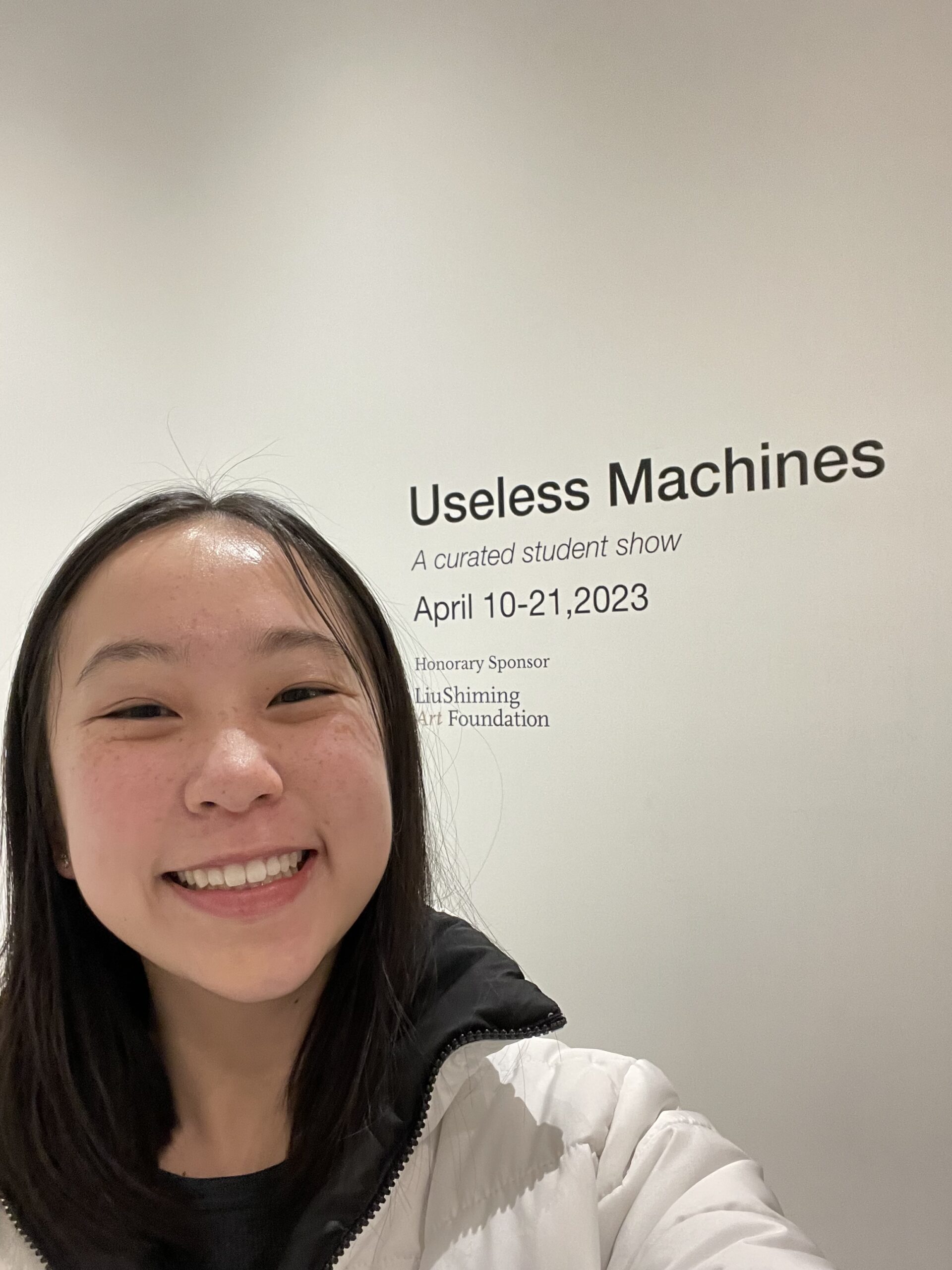
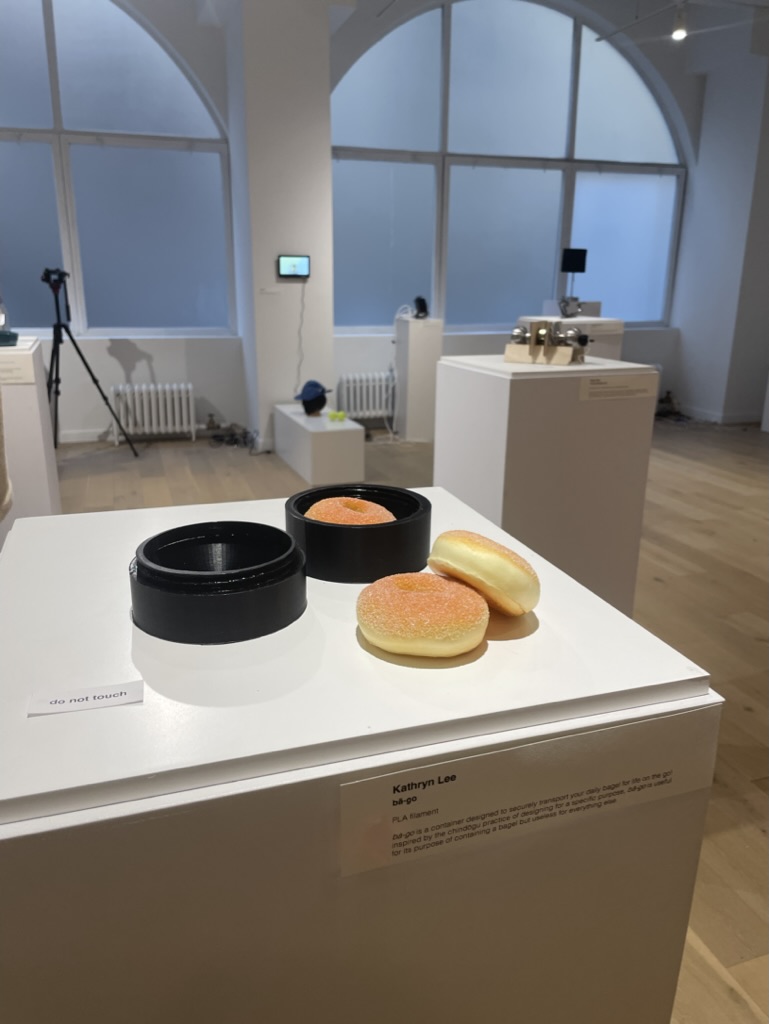
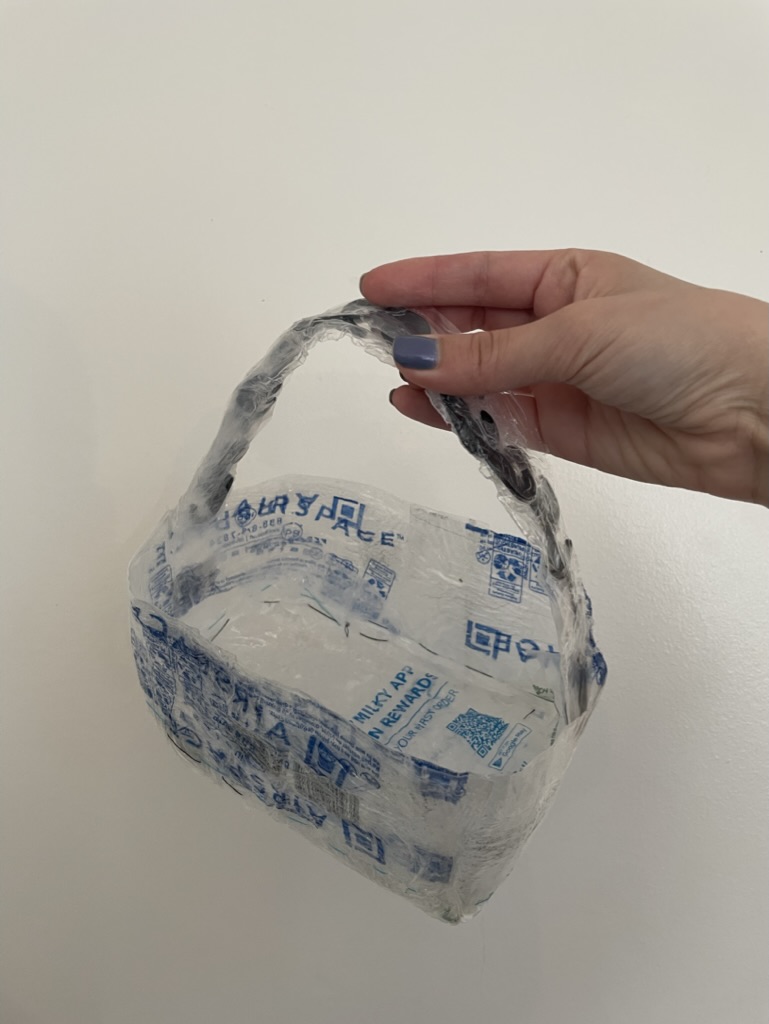
What Does the Future Hold?
What Can I Do with an IMA Degree?
Pretty much anything you want! The Interactive Media Arts program is versatile and can be applied to various fields and jobs after graduation. Today, my friends are pursuing jobs in user experience design, software engineering, gallery spaces, project management, graphic design, and more.
This program can be whatever you want to make of it, and the skills you learn can prepare you to succeed in whichever career you choose. IMA professors are pioneers in their chosen fields. As a result, they’re a valuable resource for learning and motivation. The department staff includes individuals with diverse experiences, including a YouTuber with millions of subscribers, a game studio owner based in Brooklyn, and a curator of art exhibitions.
In addition, IMA’s location in the heart of New York City allows us to connect with professionals in our field and take advantage of the amazing events and opportunities available. When I started this program, I never imagined the projects I would work on or the opportunities that would come my way. In short, I am so grateful for the experience and excited about what the future holds.
FAQs
Have Any Lingering Questions About IMA? Find Your Answers Here!
Where is the main IMA building located?
While some Tisch buildings are located at NYU’s Washington Square campus, the main academic building for IMA is located at NYU’s Downtown Brooklyn campus on the 4th floor of 370 Jay Street. The Downtown Brooklyn campus houses some other Tisch programs as well as the entirety of the Tandon School of Engineering. As an IMA student at NYU’s campus in New York City, you will take classes in both locations.
Where do you live, Brooklyn or Manhattan?
If you choose to live on campus during your first year at NYU as an IMA major, you will live in one of the Manhattan residence halls. After your first year, if you decide to continue living in an NYU residence hall, you can choose to live in any available residence hall across both campuses.
What is the difference between IMA (at the Tisch School of the Arts) and Integrated Design and Media (at the Tandon School of Engineering)? Why choose one over the other?
IMA and Integrated Design and Media (IDM) are similar programs, but there are some key differences. IMA students earn a Bachelor of Fine Arts degree, while IDM students earn a Bachelor of Science degree. This is because the IMA major includes a liberal arts core, while the IDM major emphasizes an engineering core. As a result, each major requires different courses. However, the two programs collaborate often, and students can take classes in both programs to fulfill their degree requirements.
Why does NYU require a creative portfolio during the application process?
The IMA department wants to get a sense of you as an individual and understand what kind of experience you can bring to the program! But don’t worry; there is no right or wrong portfolio. The best advice I can give is to be yourself. This portfolio can be very different from the traditional art portfolio, so don’t be afraid to add any fun projects that show off your creative side.
